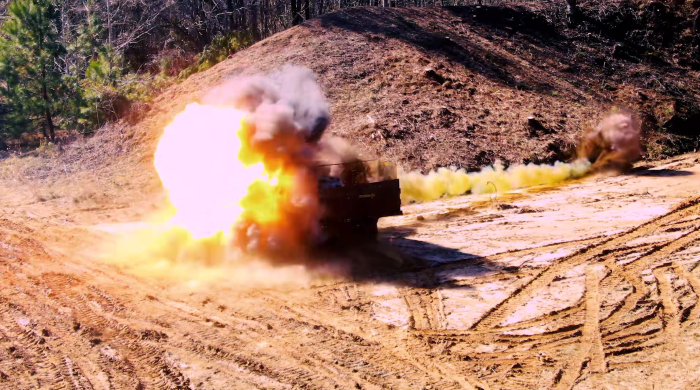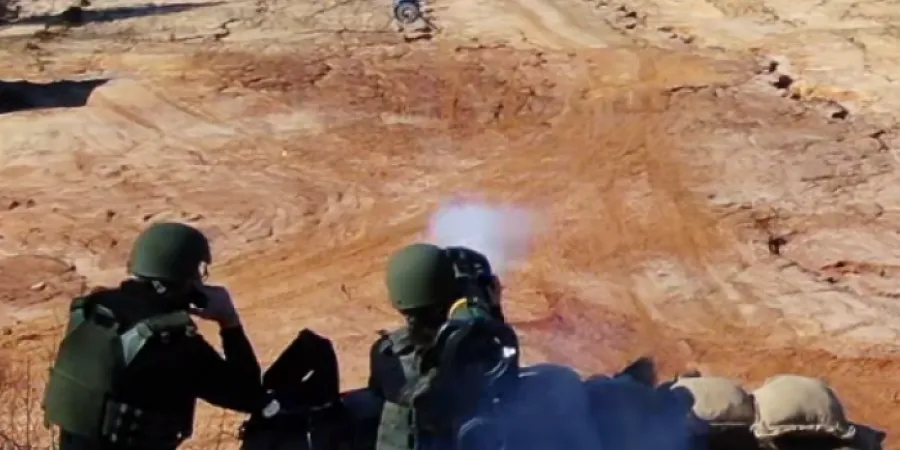Rafael's Spike SR missile evaluated by US Army
The live-fire demonstration was part of the Army Expeditionary Warrior Experiment 2021 for assessment of advanced technologies
Eyal Boguslavsky
| 31/01/2021
Israel's Rafael Advanced Defense Systems announced Thursday that together with its U.S. subsidiary, Rafael Systems Global Sustainment (RSGS), they demonstrated the Spike SR (Short Range) missile at the Army Expeditionary Warrior Experiment (AEWE) 2021 earlier this month. AEWE 2021 is assessing advanced technologies in support of U.S. Army modernization efforts, including the Army’s six modernization priorities. The assessment of the missile was the first live-fire demonstration of the Spike SR on U.S. soil.
As a portable, electro-optical guided missile, designed for today's modern infantry, the Spike SR is especially well-suited to enhance soldier lethality, one of the six priorities. The missile, which is part of the Spike family of anti-tank guided weapons, provides a lightweight (10 kg), shoulder-fired munition, with an enhanced range of 2000 meters, increasing lethality at the individual squad level. The Spike SR’s features include ease of use, allowing lower echelon infantry to rapidly qualify and sustain a high level of operation with minimal training, Rafael said.
AEWE assessed the Spike SR as a precision munition system for infantry squads, for which portability and simplicity of operation is essential. AEWE also assessed the system for its ability to allow close-combat formations to dominate the operational environment and handle new threats in a near-peer conflict.
During the assessment, live Spike SR missiles hit both static and moving targets in day (EO) and infrared modes. Challenges included overcoming battlefield obscurants that effectively eliminated the target from the field of view. During the assessment, soldiers received instruction on the operation of the weapon, including indoor and outdoor training. U.S. Army evaluators provided positive feedback on the system’s light weight, lethality and ease of use compared to what is currently in use by the Army. The experiment was managed by the U.S. Army’s Maneuver Battle Lab and U.S. combat veterans from the 1st Battalion, and 29th Infantry Regiment, also known as the EXFOR, participated in the assessment, according to Rafael.
LTG. (Ret.) Joe Anderson, President and CEO of Rafael Systems Global Sustainment, said "AEWE was an important opportunity to demonstrate Spike and multiple other Rafael systems. This included Fire Weaver, our sensor-to-shooter system, and BNET, our broadband IP SDR (Software Defined Radio). These systems, combined with Spike SR, can provide tactical overmatch by enabling high maneuverability and lethality. The live fire further demonstrated the effectiveness of Spike and provided a good opportunity for first-hand soldier feedback."

Photo: Rafael
The live-fire demonstration was part of the Army Expeditionary Warrior Experiment 2021 for assessment of advanced technologies
Israel's Rafael Advanced Defense Systems announced Thursday that together with its U.S. subsidiary, Rafael Systems Global Sustainment (RSGS), they demonstrated the Spike SR (Short Range) missile at the Army Expeditionary Warrior Experiment (AEWE) 2021 earlier this month. AEWE 2021 is assessing advanced technologies in support of U.S. Army modernization efforts, including the Army’s six modernization priorities. The assessment of the missile was the first live-fire demonstration of the Spike SR on U.S. soil.
As a portable, electro-optical guided missile, designed for today's modern infantry, the Spike SR is especially well-suited to enhance soldier lethality, one of the six priorities. The missile, which is part of the Spike family of anti-tank guided weapons, provides a lightweight (10 kg), shoulder-fired munition, with an enhanced range of 2000 meters, increasing lethality at the individual squad level. The Spike SR’s features include ease of use, allowing lower echelon infantry to rapidly qualify and sustain a high level of operation with minimal training, Rafael said.
AEWE assessed the Spike SR as a precision munition system for infantry squads, for which portability and simplicity of operation is essential. AEWE also assessed the system for its ability to allow close-combat formations to dominate the operational environment and handle new threats in a near-peer conflict.
During the assessment, live Spike SR missiles hit both static and moving targets in day (EO) and infrared modes. Challenges included overcoming battlefield obscurants that effectively eliminated the target from the field of view. During the assessment, soldiers received instruction on the operation of the weapon, including indoor and outdoor training. U.S. Army evaluators provided positive feedback on the system’s light weight, lethality and ease of use compared to what is currently in use by the Army. The experiment was managed by the U.S. Army’s Maneuver Battle Lab and U.S. combat veterans from the 1st Battalion, and 29th Infantry Regiment, also known as the EXFOR, participated in the assessment, according to Rafael.
LTG. (Ret.) Joe Anderson, President and CEO of Rafael Systems Global Sustainment, said "AEWE was an important opportunity to demonstrate Spike and multiple other Rafael systems. This included Fire Weaver, our sensor-to-shooter system, and BNET, our broadband IP SDR (Software Defined Radio). These systems, combined with Spike SR, can provide tactical overmatch by enabling high maneuverability and lethality. The live fire further demonstrated the effectiveness of Spike and provided a good opportunity for first-hand soldier feedback."

Photo: Rafael



